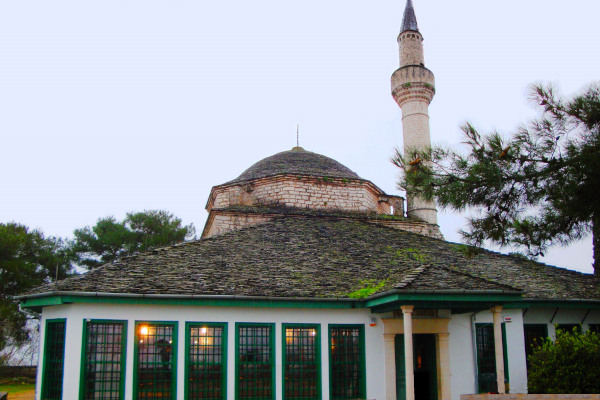The Municipal Ethnographic Museum of Ioannina opened in 1933 at Aslan Tzami (Aslan Mosque). The mosque was built in 1618 at the castle of the city, on a spot where there was the Byzantine church of St. John the Baptist before. The view from the museum is magnificent since the visitor has the opportunity to admire the whole city of Ioannina as well as the lake Pamvotida with its small island.
Close to the entrance of the museum there is a square domed room with pillars, that used to be a place of prayer but now is the main exhibition room. The recent restoration and re-organizing of the exhibits targets to depict the architecture of the monument and highlight the fact that Christians, Muslims, and Jews were living together in the same city for centuries.
The exhibits are divided into three groups according to religion. There are traditional clothes, jewelry, weapons, and items of everyday use as well as vestments and holy religious books.
The interior decoration includes Arabic inscriptions and frescoes dating from 1618. The guests can also see the Holy temple (Mihrab) with many decorative frescoes and the pulpit (minbar) with its seven steps, symbolizing the Seven Heavens. The mosque has also a minaret with 75 steps which adds to the height of the building and the impression it creates to the visitor.
